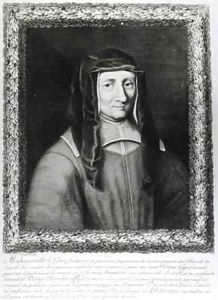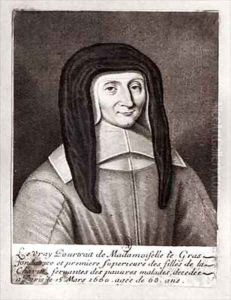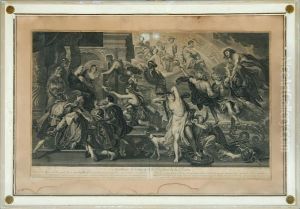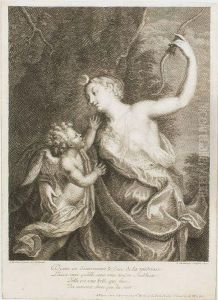Gaspard Duchange Paintings
Gaspard Duchange was a prominent French engraver born in Paris in 1662. He was the son of a bookseller, which likely gave him early exposure to the world of prints and literature. Duchange developed an interest in the arts at a young age, which led to his apprenticeship under the notable engraver Guillaume Vallet. Under Vallet's mentorship, Duchange honed his skills and became adept in the art of engraving, mastering both line engraving and the then-relatively new technique of mezzotint.
Duchange's work was characterized by its fine detail and the delicate handling of light and shade, which he achieved through the meticulous manipulation of his engraving tools. His talent did not go unnoticed, and he quickly established himself as one of the leading engravers of his time. He was particularly known for his reproductions of paintings by contemporary and earlier masters, which played a significant role in disseminating the styles and compositions of high Baroque art throughout Europe.
Throughout his career, Duchange maintained connections with prominent artists and patrons. He created engravings after works by renowned artists such as Antoine Coypel, Charles Le Brun, and Hyacinthe Rigaud. His reproductions allowed the widespread circulation of these artists' compositions, making significant contributions to the period's visual culture. His prints were collected by art connoisseurs and were often used as illustrations in books, further extending their reach.
Gaspard Duchange's success as an engraver earned him recognition from the French Royal Academy of Painting and Sculpture, where he was admitted as a member in 1707. This was a significant achievement, as it reflected not only his artistic skill but also his contribution to the arts in France. He continued to work and produce notable engravings until his death in 1757.
Despite his death, Duchange's legacy lived on through his engravings, which continue to be appreciated by art historians and collectors. They provide a valuable visual record of Baroque and Rococo artworks, many of which may have been lost or damaged over time. Duchange's skillful engravings have thus played an important role in preserving the cultural heritage of his era.



